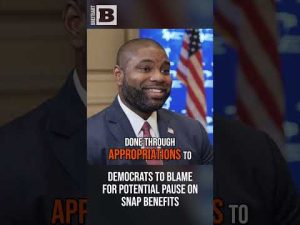**Understanding the Fed’s Rate Cut: What It Means for Everyday Americans**
In a world where financial jargon often sounds like it’s being spoken by aliens, the recent 25 basis point cut by the Federal Reserve has sent ripples of curiosity across the nation. Most folks likely don’t cozy up at night with a hot cup of cocoa and a Federal Reserve statement in hand. They would much rather binge-watch their favorite shows! But this announcement, while seemingly minor, has implications that could affect everything from your mortgage bills to the little extra cash you have left over for a trip to the grocery store.
Picture the Federal Reserve as the behind-the-scenes director of America’s financial play. It isn’t a government entity in the traditional sense, and it certainly isn’t a mobster hiding out in a smoky backroom (or is it?). No, it operates like that super smart friend who knows just how to juggle the economy. When things start going downhill in the economic rollercoaster, the Fed’s solution is often to lower the federal funds rate. You might wonder, what does this even mean? Well, it’s the rate at which banks charge each other for overnight loans, and when this rate is lowered, borrowing becomes cheaper.
But here’s the catch: while the reduction in interest rates can make loans easier to obtain, it might not translate into immediate benefits for everyone. Homeowners with adjustable-rate mortgages may breathe a little easier as their payments decrease, maybe even saving a few hundred bucks each month. However, if you’re swimming in credit card debt, don’t hold your breath waiting for that relief. Those banks are notoriously slow when it comes to lowering credit card interest rates after the Fed makes a move, taking their sweet time while still charging borrowers hefty rates.
So, what exactly is the Fed up to with these cuts? The latest decision was partly driven by rising concerns over employment. In plain English, the Fed is saying that job losses could be on the horizon. The report, cloaked in complicated financial language, essentially boils down to a simple truth: we’re losing jobs, and we need to stimulate the economy to prevent further shrinkage. While the Fed tries to cushion the blow, it’s important to remember that the ongoing battle against inflation is tricky, and every time they pull that lever, it can make your money feel less valuable in the long run.
If you’re living paycheck to paycheck, a lower interest rate may feel like a knight in shining armor bringing a bit of relief in the short term. Loans may seem easier to acquire, and monthly payments might just be a smidgen lighter. However, it’s essential to remember that with every rate cut, your dollar might be taking a dip in value. Financial experts often harp about inflation, and although the Fed claims to aim for a modest 2% inflation each year, shouldn’t we aim for zero? After all, why accept that our hard-earned money should dwindle by two cents every dollar annually?
As citizens gaze toward the horizon, hoping for improvements in job creation and the economy, it’s crucial to be wise about personal finances. If you have debts, consider using this rate cut to pay them off faster, rather than taking on more financial commitments. For savers, alternatives like real estate and other hard assets could be a great idea, given that savings accounts may earn less interest as rates continue to fluctuate. With the shift from fear of inflation to stimulating growth, it’s a turbulent time for everyone. While the Fed might think they are delicately balancing economic pressures, the average American is left hoping their paycheck can keep pace with the changing tides of finance.
In the end, the Fed’s decision is a complex game of cards that affects each of us differently. While some may find relief in lower borrowing costs, others may experience slower growth in their savings. So, keep your eyes peeled and don’t forget to stay informed—because every financial move made in Washington can be as important as the next big election.







